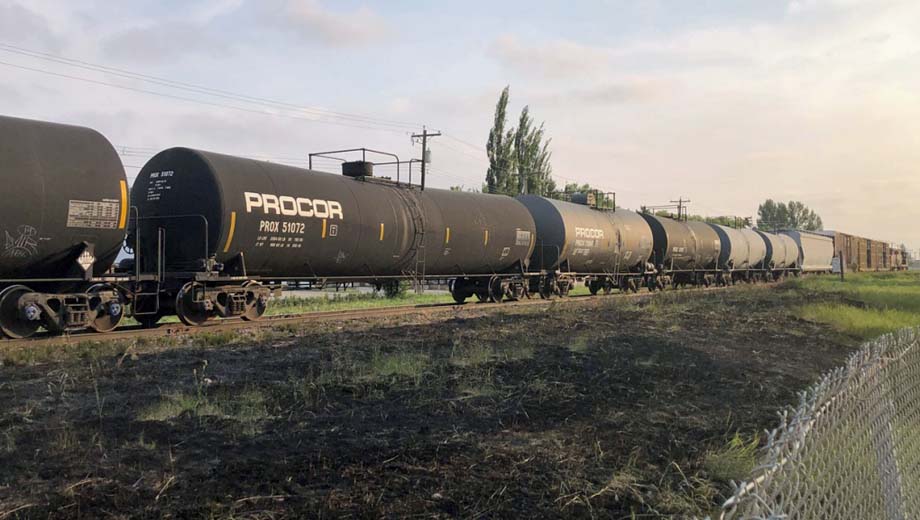
Calgary Alberta - A fire near a freight train in Calgary is just one of many incidents that
prompted Transport Canada to adopt new safety rules during periods of extreme heat.
The Transportation Safety Board of Canada (TSB) Investigation Report R21C0070 into the incident on 17 Jul 2021,
determined that flames and embers were being emitted from the exhaust stacks of the lead engine as it travelled slowly
on the tracks in southeast Calgary.
The embers landed in the right-of-way, igniting a fire that extended for approximately 724 metres (2,376
feet).
"They were contained between the track and a wire fence on the east side of the track," the TSB report
said, adding the engine nor the track were damaged in the incident.
The agency says hot weather played a factor in the fire, where daytime high temperatures had lingered between 25 and
30 C for approximately a week before.
The TSB says the engine has also been left idling for approximately 24 hours prior to the fire, resulting in a build up
of carbon deposits in the exhaust system.
"The locomotive event recorder data showed that when the occurrence crew began their shift at 2141 on
16 July 2021 the locomotive had been idling in Sarcee Yard since 21:45 the previous day," the TSB report
stated.
"In the movements preceding the occurrence, the throttle modulations were frequent, and the throttle positions
were held only for short periods, contrary to CN instructions on handling locomotives that have been idling for an
extended period. During the occurrence movement, the throttle was placed in position 8 for about three minutes, at
which time the flames were noticed."
The TSB says part of the problem also had to do with a lack of compression in two of the engines power
assemblies.
Since diesel engines require compression to create heat to ignite fuel, unburned fuel "was being expelled into the
exhaust system."
"Once in the exhaust system, the diesel fuel ignited, causing a fire in the locomotive exhaust stack," it
said.
"Unburned fuel can result in a buildup of carbon deposits in the exhaust system. It is likely that some of the
carbon deposits present at the time of the occurrence ignited, creating embers that were expelled from the locomotive
exhaust stack before the flames were noticed by the crew. Embers migrated to the right-of-way, igniting grass
fires."
New Rules Introduced
As a result of this and similar fires involving a railway right-of-way, Transport Canada approved Railway Extreme Heat
and Fire Risk Mitigation Rules on 15 Jun 2022.
"The new rules stipulate requirements to address track integrity during periods of extreme heat, for inspection
of the exhaust system, and for a fire risk mitigation plan for the prevention of fires on railway rights-of-way,"
the TSB said.
Crews are also instructed to rev the engine for a sufficient amount of time to clear the exhaust stack of carbon
deposits in a controlled fashion on locomotives that have been idling for an extended period.
Author unknown.
 Links to Transportation Safety Board (TSB) Investigation Reports
are no longer provided as they keep changing their report address (URL). Manually search for the Investigation
Report number indicated above.
Links to Transportation Safety Board (TSB) Investigation Reports
are no longer provided as they keep changing their report address (URL). Manually search for the Investigation
Report number indicated above.
(likely no image with original article)
(usually because it's been seen before)
provisions in Section 29 of the
Canadian Copyright Modernization Act.


